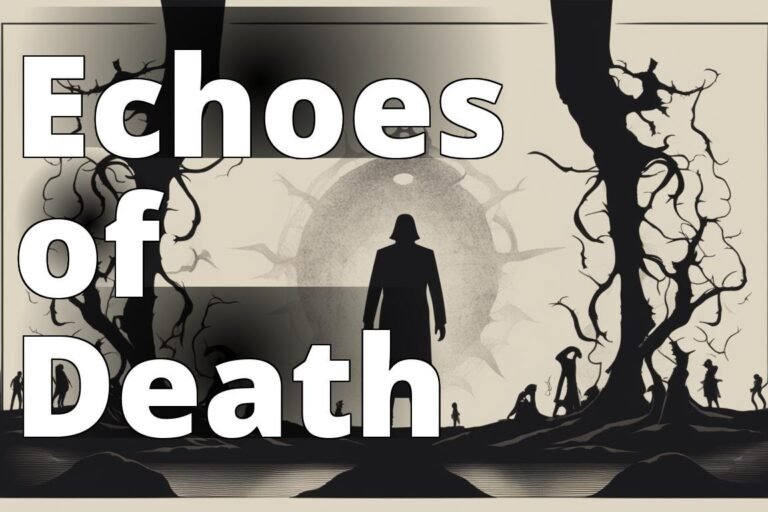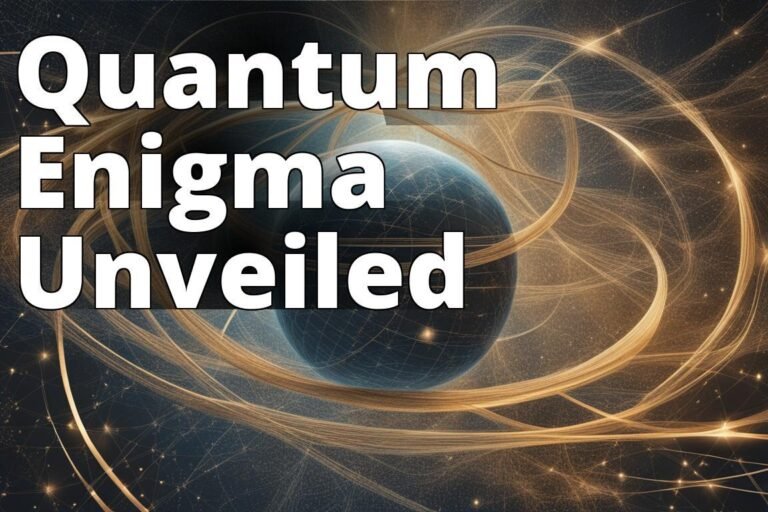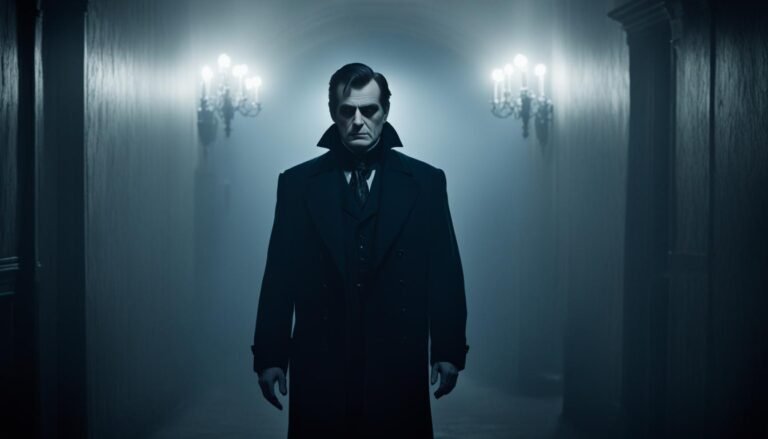A History Of Psychics in the Governement
Huddle up, history buffs, and those with a penchant for the offbeat—you’re about to step into a narrative that’s more twisty than a spoon bent by covert mind-powers. Yes, we’re unsealing the dossier on Extra Sensory Perception, the storied phenomenon where psychic abilities aren’t just the staple of late-night call-in shows, but a slice of American secret service pie. Now, if we told you that government psychics and paranormal intelligence were not just plot points in a pulp sci-fi serial but real-deal endeavors of Uncle Sam, would you believe us? Well, hold onto your aluminum hats, because that’s exactly what splashed across headlines, thanks to figures like Uri Geller and covert ops like Project Star Gate.
We’ve combed through declassified files, thumbed through accounts by national security reporters like Annie Jacobsen, and we are ready to dish out an enthralling chronicle where the ESP isn’t just a quirk—it’s a quintessential quest for edge in the spy games. Join us as we dive deep into the shadowy operations where the government’s pursuit of the sixth sense rewrote the script for espionage.
Key Takeaways
- Uri Geller sparked government interest in utilizing psychic abilities for espionage activities.
- Declassified documents reveal the extent of U.S. intelligence agencies’ investment in ESP research.
- Programs like Project Star Gate attempted to harness paranormal cognition for national security.
- Psychic prowess, like remote viewing, once staked a claim in the intelligence community’s toolkit.
- The debate over the scientific credibility of ESP and its place in espionage remains unresolved.
- Despite skepticism, certain government-sponsored psychics achieved verifiable feats of extra sensory perception.
- The legacy of government psychics continues to captivate and inform modern intelligence strategies.
The Fascinating Inception of Government Interest in ESP
Let’s set the scene: In the smoky afterglow of World War II, there’s more than just the geopolitical chessboard getting a reshuffle—there’s a metaphysical one too. It turns out our government had been playing a hand, the cards being nothing other than the tantalizing promise of ESP. Our story begins not with a crystal ball, but with a humble document—a memorandum, to be precise, penned in the era when big band jazz still filled the airwaves. This wasn’t a call for more sax solos; it was a pondering on the potential of hypnotism for cloak-and-dagger chatter over miles. Imagine, a mental telephone without the phone. That’s right, we’re talking telepathy.
But why the intrigue in mental wizardry? Cue the mysterious contents of Das Ahnenerbe, the brainchild of none other than Heinrich Himmler himself. His cache of documents, sliced like a pie between America and the Soviet Union, revealed a curious blend of science and the supernatural. This treasure trove catapulted Uncle Sam and friends into a supernatural sprint, only instead of gym shoes, they wore the shrouded cloak of secrecy.
Our venerable Pulitzer Prize finalist, Annie Jacobsen, waved the green flag on this tale, coining it the start of a “psychic arms race”. It was here the gauntlet was thrown, the stage set for a decades-long pursuit—government ESP research that would gaze into the unknown, hoping to pluck out an intelligence coup or two.
A 1948 Memorandum: The Start of a Paranormal Inquiry
Who would’ve guessed that the starting pistol of our government’s paranormal inquiry came in the form of a memorandum wondering—quite seriously—whether a hypnotized person could become the ultimate cross-continental messenger? This nascent curiosity planted the seeds that would eventually flourish into a robust research enterprise, reaching into the furthest corners of the psychic realm.
From Nazi Documents to Psychic Arms Race
And so, it began—a tale woven from the very fabric of post-war espionage narratives. The acquisition of Das Ahnenerbe documents sparked more than just the imagination; it ignited a very real quest, one mirrored by our frenemies to the east. Soon, the intelligence community from both superpowers found themselves locked in a race not of weaponry, but of the mind. Who could harness the unseen force of ESP first?
The enigma of ESP whispered its existence in covert corridors, leading the CIA to acknowledge its real yet enigmatic presence in 1975. The declaration was akin to spotting a ghost—everyone wants to believe it’s there, but the faint-hearted rally their doubts. And so the pursuit throbbed on, weaving through the intelligence community’s pursuit of shadows. A cause for exhilaration? Certainly. Outlandish? Maybe. But we were game to explore further, our government agencies ready to flip the next tarot card.
Above all, one cannot overstate the strategic allure this psychic Macedonian call brought forth. The alluring dance of mental acrobatics, the sealed lips of officials and scientists—each element a fiber in the grand tapestry of our covert history. And as these tales of perception beyond senses unfold, they leave us wondering—just how deep did the rabbit hole go, and where did it emerge?
Extra Sensory Perception: Defining the Government’s Sixth Sense
When we, the curious and the skeptical, endeavor to unravel the intricate tapestry of ESP definition, we’re venturing into the government’s quest to articulate and harness the elusive sixth sense. This pursuit wasn’t just a footnote in arcane texts but an earnest exploration by the likes of the CIA and DIA in the historical halls of Uncle Sam’s most secretive congregations.
Let’s cast our minds back to the 1970s. Picture the scene: Laboratories buzzing with the anticipation of probing the intuitive perception that may very well give the West a Cold War edge. With the fervor of a clairvoyance carnival, government-backed researchers embarked upon the task of delineating the shadows of the unseen world. The target? ‘Remote viewing’, the mental crystal ball that purportedly allowed select individuals to perceive remote locales without the inconvenience of physics or plane tickets.
Yet, science, often a stickler for predictability, threw a wrench into these plans. Initial tests teased the researchers with a flicker of hope—results that danced defiantly in the face of randomness. But alas, the whims of ESP proved too mercurial for the sober requirements of espionage. In a realm where the CIA longed for James Bond consistency, what they got instead was a spiritual séance’s maddening inconsistency.
Thus, our tale of ESP within U.S. Government’s lore leads us not to a grand finale of psychic warriors, but to an elegant exit stage left by 1977. The CIA, ever the practical jester in this cosmic comedy, folded their cards, conceding that while the game was thrilling, the stakes of clairvoyance were too high for the reliable intelligence they so desperately craved.
- Inception of CIA and DIA interest in ESP: A drive shaped by the possibilities of a sixth sense in intelligence.
- Remote Viewing research: When the quest for an actionable ESP definition took root within the shaded gardens of government facilities.
- Scientific roadblocks in ESP application: Even the potency of intuitive perception was no match for the exigencies of reliability and consistency demanded by the rapid chess game of spying.
We ponder, as we close this whimsical prologue, might the future shake hands with the past, leading a resurgence of interest in the spectral skills of clairvoyance? For now, we rest our case to the annals of curiosity, buoyed by the hope that there’s more to our reality than meets the mind’s eye—or the government’s sixth sense, as it were.
Uri Geller: The Mind-Bending Catalyst for Psychic Research
Our journey into the arcane reveals a figure who wasn’t just a flash in the parapsychological pan but rather the match that lit the flame: Uri Geller. As if leaping from the pages of a comic book, this ex-Israeli army paratrooper turned self-proclaimed psychic stunned the peanut gallery and higher powers alike with his spoon-bending theatrics and purported mind-reading abilities.
Public Displays of Spoon-Bending and Mind-Reading
Was it mere trickery or a glimpse into the human mind’s untapped potential? Geller’s televised performances, which had audiences questioning the very fabric of reality, became not just parlour acts but posed a pressing question to the intelligence communities: could Geller’s psychokinesis serve as a potent tool in the espionage toolbox?
Certainly, the idea of “psychic research” gained a newfound respectability—or at least, a secret consideration—within the cloaked halls of intelligence agencies. We mustn’t forget, dear readers, that the wild and mysterious often cloaks a kernel of truth—or, at the very least, potential.
Geller’s Intersection with Intelligence Communities
Ladies and gentlemen, witness the evolution of Uri Geller from showman to the suspect of covert attention. His abilities, embroiled in controversy and curiosity, made heads turn—not least among them those bald eagles at the Defense Intelligence Agency. What if this man’s talents could be the missing piece in the delicate game of international intelligence chess?
The tantalizing possibility that Geller could, with a mere furrow of his brow, disrupt enemy radars or glean state secrets from afar was too enticing to ignore. Despite a notably awkward appearance on “The Tonight Show”, where his powers seemed as absent as Houdini’s locks, Geller’s dance with the spy sector did not wane.
Without further ado, let us unveil the offspring of this union between spectacle and secrecy: Project Star Gate. Boutonnieres and ballgowns aside, this project aspired to marshal the rank and file of psychics in a bid to leverage extra sensory perception for Uncle Sam’s voyeuristic ventures. Yes, you heard it here first: Uncle Sam’s psychic brigade, ready to peek behind the Iron Curtain without ever lifting a finger—well, metaphorically speaking.
Geller once claimed, “I don’t feel strong. I can’t…” during his famous flop on “The Tonight Show”, yet the cold war had no time for stage fright. The interest was piqued, and the ESP catalyst had worked its arcane charm.
In conclusion—ah, but we resist concluding just yet—for the ESP narrative continues to twist and turn, ever unfurling its secrets. Still, this chapter etched in the annals of psi-entific history attests to a time when the mind was both battlefield and weapon, with the dapper Geller saluting as its enigmatic general.
Project Star Gate: The Government’s Leap into Psychic Espionage

Imagine, if you will, a covert operation where the line between mind and matter is blurred, where the Defense Intelligence Agency doesn’t just listen through bugs, but gazes through the mind’s eye. This was the reality—or should we say, the psychic vision—of Project Star Gate, a leap into the boundless planes of psychic espionage. Here, at Fort Meade, the rules of espionage were rewritten with a bold, if controversial, stroke of extrasensory insight.
Remote Viewing and Psychic Spies
Under the shrouded canopy of secrecy, psychic spies, or ‘remote viewers’ as they were termed in the sanitized language of defense intelligence, plied their skills in the service of national security. Project Star Gate aimed to harness their abilities, squinting into the fog of war with a third eye. How did it work? Imagine spies comfortably ensconced in their offices at Fort Meade while their consciousness roamed battlefields and bunkers worldwide. Yes, remote viewing was the Defense Intelligence Agency’s bold foray into casting the net of surveillance beyond the limitations of the physical world.
Success Stories: Locating Hostages and Fugitives
Anecdotes of success punctuated Project Star Gate’s tenure, fueling the fire that maybe, just maybe, there was something to this ESP business. Take, for instance, Angela Ford, a remote viewer whose perceptual tendrils allegedly latched onto the whereabouts of a fugitive customs agent. Was it blind chance, or was it her mental faculties casting a net far wider than any dragnet the physical world could lay down? Her pinpoint prediction carved a notch in the annals of espionage history, offering a tantalizing glimpse of a world where “intel” isn’t just gathered—it’s divined.
Let’s not bathe overly long in the light of success stories—our tale’s truth lies partly in the shadows, where misses outnumber hits. Acknowledged by skeptics and enthusiasts alike, the enigmatic interplay between cognition and espionage remains as elusive as a ghostly whisper in a windswept corridor. Project Star Gate, a mere thread in the broader tapestry of intelligence history, leaves a legacy wrapped in enigma and lined with the faint glow of possibility.
The Clash: Skeptics vs. Believers in Paranormal Intelligence
Within the clandestine walls of U.S. intelligence agencies, a captivating drama unfolds—starring skeptics and believers in a gritty production over the existence of paranormal intelligence. Backed by CIA research, the debate over ESP has simmered in a cauldron of controversy, with the scientific validity of psychic phenomena both fervently defended and sharply contested.
CIA and DOD: A Battle of Beliefs
Caught in a polar dance, the CIA and DOD donned the masks of believer and skeptic. The ESP dispute carved a line in the sand, defining sides in a showdown of conviction versus doubt. Believers clutching to rare, yet strikingly accurate psychic feats are fueled by testimonies of locating the elusive or predicting the unforeseeable.
Disputes over the Scientific Validity of Psychic Phenomena
Rallying the parade of skeptics, figures like Sean Carroll of Cal Tech cast a long shadow of scientific scrutiny over these claims. They argue that psychic phenomena teeter on the precarious edge of scientific validity, often tumbling into the realm of pseudoscience without reproducible results. Yet the loyal opposition, including Angela Ford and others verified by the Institute of Noetic Sciences, offer a persuasive counter-narrative. Their ESP-driven successes flash sporadically, like beacons in the murky domain of sensory transcendence.
As we traverse this intricate narrative, one must ponder: does the truth of psychic phenomena in espionage lay shrouded in the mists of secrecy, or is it merely a specter of wishful thinking? Amidst this clash of skeptics vs believers, the journey for answers continues, gilded with tales of paranormal intelligence and whispers of a world just beyond the reach of the five senses.
Techniques in Telepathy: How the Government Tried to Train Psychics

We’ve seen some wacky ideas from our government, but perhaps none as ‘out there’ as their attempts to teach telepathy techniques and harness psychic training within the intelligence community. In our story of mind over matter, the notion to revolutionize intelligence held a gripping allure, leading intelligence agencies down a rabbit hole of paranormal potential.
Revolutionizing Intelligence: Training for Psychic Skills
Like a high-stakes poker game, the government bet on the idea that extrasensory aptitude could be coaxed and cultivated. Picture a world where intelligence agents leverage telepathy techniques to tap into enemy communications or unveil hidden threats—an unrealized dream to revolutionize intelligence.
The initiatives resembled a symphony, where each would-be psychic was an instrumentalist, albeit more attuned to mental frequencies than musical notes. Instead of scales and arpeggios, the melody was a cerebral one, with the CIA conducting a hush-hush orchestra of the mind.
The CIA’s Stance on Biological Phenomena
But let’s get real for a moment. The CIA’s stance on this was as sturdy as a three-legged table. They saw psychic abilities as biological phenomena—intimately personal and non-replicable. Psychic prowess was not something to be bottled and sold like a cheap parlor trick.
And so, despite best efforts to foster an army of Nostradamuses, the harsh spotlight of reality showed that not everyone’s gray matter was cut out for the psychic marquee. The promising avenue of turning agents into clairvoyants eventually came to a crossroads where practicality and fantasy were at loggerheads, resulting in internal conflicts that led to the shuttering of such grand experiments.
| Telepathy Techniques Explored | Challenges | CIA’s Insights |
|---|---|---|
| Remote Viewing | Inconsistent Results | Innate Ability, Rare |
| Precognition Training | Non-replicable Phenomenon | Cannot Be Taught |
| Psychokinetic Exercises | Lack of Scientific Support | Biological Phenomena |
| Mental Telepathy | Communication Limitations | Focused on Individual Mastery |
Indeed, the quest to mainstream psychic training in espionage proved as fleeting as the flicker of a candle—brilliant while it lasted, but ultimately not the steady flame needed to light the path of intelligence gathering. Our government’s dalliance with the psychic realm stands as a testament to the lengths they were willing to go to maintain that ever-crucial edge. And though the mass-production of psychic spies faded into the stuff of lore, the fascination with such otherworldly skills persists to this day. Who knows what lurks in the classified shadows of tomorrow?
Not Just a Fad: How Psychics Shaped Government Strategies
It’s no secret – the corridors of power have echoed with whispers of the supernatural. Our trusty psychics in government strategy weren’t just shooting stars streaking through the night sky of defense; they were trailblazers, infusing their arcane insights into the bedrock of national security. As we galloped into the digital age, these soothsayers of yore found themselves side-by-side with modern technology, as their ESP adaptation to new-fangled gadgetry crafted a legacy that’s anything but ephemeral.
Adapting to Advancements: ESP and Modern Technology
Remember the bulky computers of yesteryear? Well, chuck that image out the window. Today, we’ve got smartphones that could’ve sent Apollo to the moon. In that spirit, our insatiable appetite for innovation catapulted extrasensory perception into the limelight of modern technology. No longer confined to crystal balls and séances, ESP adaptation now shares a cubicle with the brainiacs of Silicon Valley, crunching numbers and predicting trends with an ethereal twist.
But it’s not all binary and circuits; the human element still reigns supreme. The legacy of government psychic programs – think Project Star Gate’s daring forays into the unknown – now marries intuition with algorithms. It’s an unlikely fusion of the mystical and the mechanical, all under the watchful eye of researchers eager to push the boundaries of perception and intelligence.
The Continuing Legacy of Government Psychic Programs
Like an old vinyl that keeps spinning hit tunes, the legacy of psychic programs within the echelons of defense strategy continues to inspire. Let’s face it, ‘winging it’ isn’t in the vocabulary of agencies guarding our nation’s security. The substantial dossier of psychic exploits we’ve inherited informs contemporary stratagems, embedding ESP as a quiver in the sagacious arsenal of our nation’s defense.
What does this mean for tomorrow’s game plans? It means we stay locked and loaded, ever-ready for the reality that the next breakthrough in intelligence could come from the mindscape of a psychic savant. Our collective intrigue is piqued, the data accumulating, and the lesson clear: never underestimate the power of the government’s sixth sense, for it has morphed into a strategic symphony that continues weaving its spell over our modern-day guardians.
Declassified Documents Unveil the Truth Behind Psychic Programs
A reveal shrouded in secrecy for decades, the release of declassified documents has shed new light on what was once whispered conjecture. We’re talking about the intelligence operations that interwove ESP with espionage—a tapestry rich with psychic programs truth and government intrigue. These documents grant us profound insights into operations like Project Star Gate and pull back the heavy drapes of covert maneuvers by agencies like the CIA and the DIA.
Reviewing these reports and memos is akin to unboxing a trove of enigmas. Each page turn is a revelation, offering tangible evidence that yes, our government indeed invested time, money, and gray matter in the pursuit of paranormal cognition for national security. But it wasn’t all passing through walls or divining enemy secrets—oh no. The documents speak volumes about the erratic nature of these psychic programs, ultimately leading to their closure. Inconsistent results and scientific skepticism cast a pall over their viability as reliable sources of intelligence, leading to the final curtain call of these programs.
But let’s not dim the lights and bow out just yet. The unearthed files of Project Star Gate and related glimpses into psychic intelligence serve as a gold mine for historians and laypersons alike, piecing together a picture that is as fascinating as it is historically significant. So, as we sift through the remnants of these pioneering programs, we can’t help but marvel at the lengths to which the notions of ESP extended within the clandestine corridors of U.S. intelligence operations—a narrative we couldn’t have conjured up even with the strongest ESP vibes.
FAQ
What is Extra Sensory Perception (ESP)?
Extra Sensory Perception, or ESP, is often referred to as the ‘sixth sense’. It encompasses paranormal abilities like clairvoyance, telepathy, and intuitive perception, which go beyond our five traditional human senses.
How did the U.S. government show interest in psychic abilities?
The U.S. government’s intrigue with psychic abilities started with classified explorations like Uri Geller’s work during televised spoon-bending and mind-reading performances, which sparked interest within intelligence communities, eventually leading to initiatives like Project Star Gate, which sought to utilize psychic abilities for espionage purposes.
What was Project Star Gate?
Project Star Gate was a top-secret initiative by the Defense Intelligence Agency which utilized ‘remote viewers’ – individuals with psychic abilities – for espionage efforts, such as locating hostages and fugitives.
Were there any successes in government-led psychic research?
Yes, within clandestine environments like Project Star Gate, remote viewers had some successes in practical applications, such as locating missing people. However, due to the inconsistency and unpredictability of the results, the programs weren’t sustained long-term.
How have technologies and scientific advancements influenced ESP research within the government?
As technology and science have advanced, so too has the integration of these fields into the exploration of ESP. Efforts have been made to explore ways in which neurobiology and computer technology could be used to enhance the understanding and application of psychic abilities within national security strategies.
Have psychic methods been completely dismissed by the government?
Though skepticism has led to the cessation of certain ESP programs, the release of declassified documents has shown that there has been sustained, if not consistent, interest and belief in the potential application of paranormal cognition for intelligence and national security purposes.
What is the government’s official stance on psychic abilities?
Initially, government programs like those under the CIA approached ESP and psychic abilities as biological phenomena with potential utility. However, due to the variability of results, the official stance has swayed between belief and skepticism, often questioning the scientific validity and practical application of these abilities.
How did clairvoyance and telepathy fit into these government programs?
Clairvoyance and telepathy were viewed as key components of ESP that could be leveraged in intelligence operations. Their practicality and potential were tested through methods like ‘remote viewing’, in an effort to tap into these abilities for gathering intelligence.
Did the release of declassified documents impact the perception of government ESP studies?
Certainly. The release of declassified documents has offered a more concrete look at the extent and nature of the government’s interest in psychic phenomena, providing insights into both the successes and the struggles of various ESP-focused projects, such as Project Star Gate.
What is the significance of a psychic arms race?
Post-World War II, documents revealed that Nazi Germany was interested in ESP and psychokinesis, sparking an international intrigue in psychic abilities. This prompted a so-called ‘psychic arms race’, particularly during the Cold War, as the U.S. and USSR both wanted to explore these abilities for strategic advantages.







